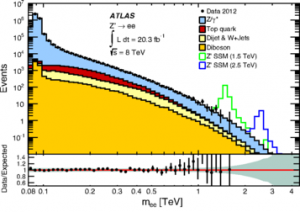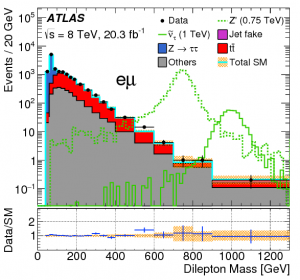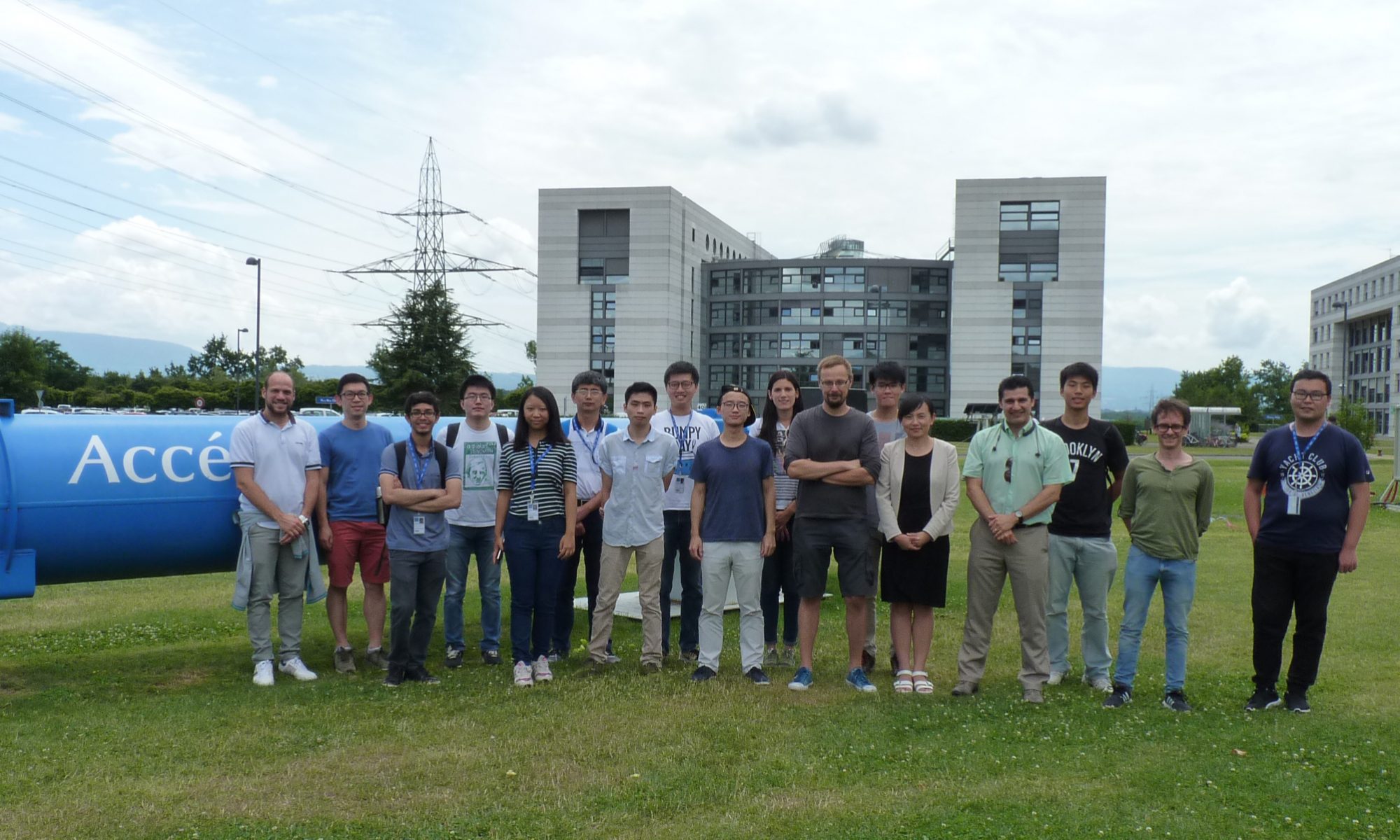Content
Search for Z’ Boson
We are searching for a neutral, massive particle which does not exist in the Standard Model. Such a particle, typically referred to as Z’ boson, is predicted by many BSM (Beyond Standard Model) scenarios. Our search of this particle can not only verify the “citizens” of elementary particles, but also support or reject those BSM scenarios.
Up to now, the observations from experiment are consistent with the Standard Model. Another way to say it is “there has been no evidence for such particle yet”. Our studies have narrowed down the limit of mass of Z’ under different BSM scenarios.
Method of the Research
In 2012, 8 TeV center-of-mass proton-proton collision was performed at LHC. The resulting dataset from the ATLAS detector was analysed to search for evidence of the Z’. The fingerprint of Z’ is di-lepton pair, which is the expected decay product. Such a phenomenon is called di-lepton resonance.
Same flavor di-lepton search

Di-lepton resonance is predicted by the grand-unification model (GUT), and several other models which solve the hierachy proplem. Under these scenarios, Z’ is expected to decay into 2 leptons with same flavor, which is any one from ee, μμ, ττ.
The following analysis is based on the Sequential Standard Model (SSM) (no need to worry what it is here, just a BSM model).
The area chart shows the predicted background signals with ee decay. The green and blue lines are signals that would appear if there were Z’ with 1.5 TeV and 2.5 TeV mass.
However, the experimental signal match well with the background — there is no significant signal for a low-mass Z’.
The conclusion is: mass of Z'SSM > 2.9 TeV (together with μμ analysis)
Lepton flavor violating search

Lepton-flavor-violation (for charged particle) is not permitted in the Standard Model, but is predicted by several new physics scenarios. SSM, in particular, predicts Z’ could decay to eμ, eτ or μτ (with opposite charge).
Again, the following analysis is based on the Sequential Standard Model (SSM).
The area chart shows the predicted background signals with eμ decay. The dotted green line is the signal that would appear if there were Z’ with 0.75 TeV mass.
Similar to the result of ee decay search, the experimental signal matches well with background.
The conclusion is: mass of Z'SSM > 2.5 TeV
Future — increase of sensitivity of LHC and ATLAS
We wish to confirm the (non)existence of Z’ , which requires better experimental data which raise the sensitivity to Z’. The Phase 2 upgrade of the LHC and ATLAS is a promising power tool.
With the energy of proton-proton collision almost doubled (14 TeV), the sensitivity to di-lepton resonance would increase, up to 7.8 TeV. When it comes true, we can further narrow down the range of mass of Z’ — or show its existence.
Higher performance particle collider
The Future Circular Collider (FCC) is meant to push the energy and intensity of particle colliders. It is expected to reach the collision energy of ~100TeV.
The FCC Study, hosted by CERN, is an international collaboration of more than 70 institutes from all over the world. The first step of the FCC Programme would exploit a high-luminosity e+e– collider (FCC-ee) with a 100TeV proton-proton collider (FCC-hh) as the ultimate goal.
Through the FCC, we will address some fundamental open questions of particle physics: e.g.
- hierarchy problem
- stability of the Universe
- nonzero neutrino masses
- etc.
FCC as a powerful collider, will provide good tools for studying not only the Higgs, but also for observing physics’ phenomena that never been seen before.
References
- Searching for supersymmetry in Z’ decays, arXiv:1307.1040
- Search for high-mass dilepton resonances in pp collisions at √s = 8 TeV with the ATLAS detector, arXiv:1405.4123
- Search for a Heavy Neutral Particle Decaying to eμ, eτ or μτ in pp Collision at √s = 8 TeV with the ATLAS Detector, arXiv:1503.04430
